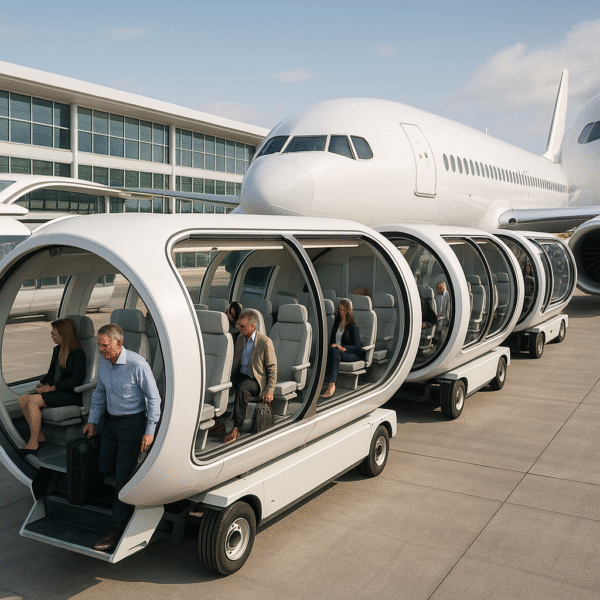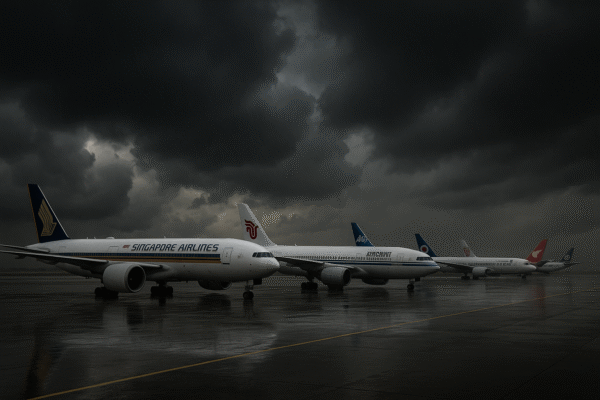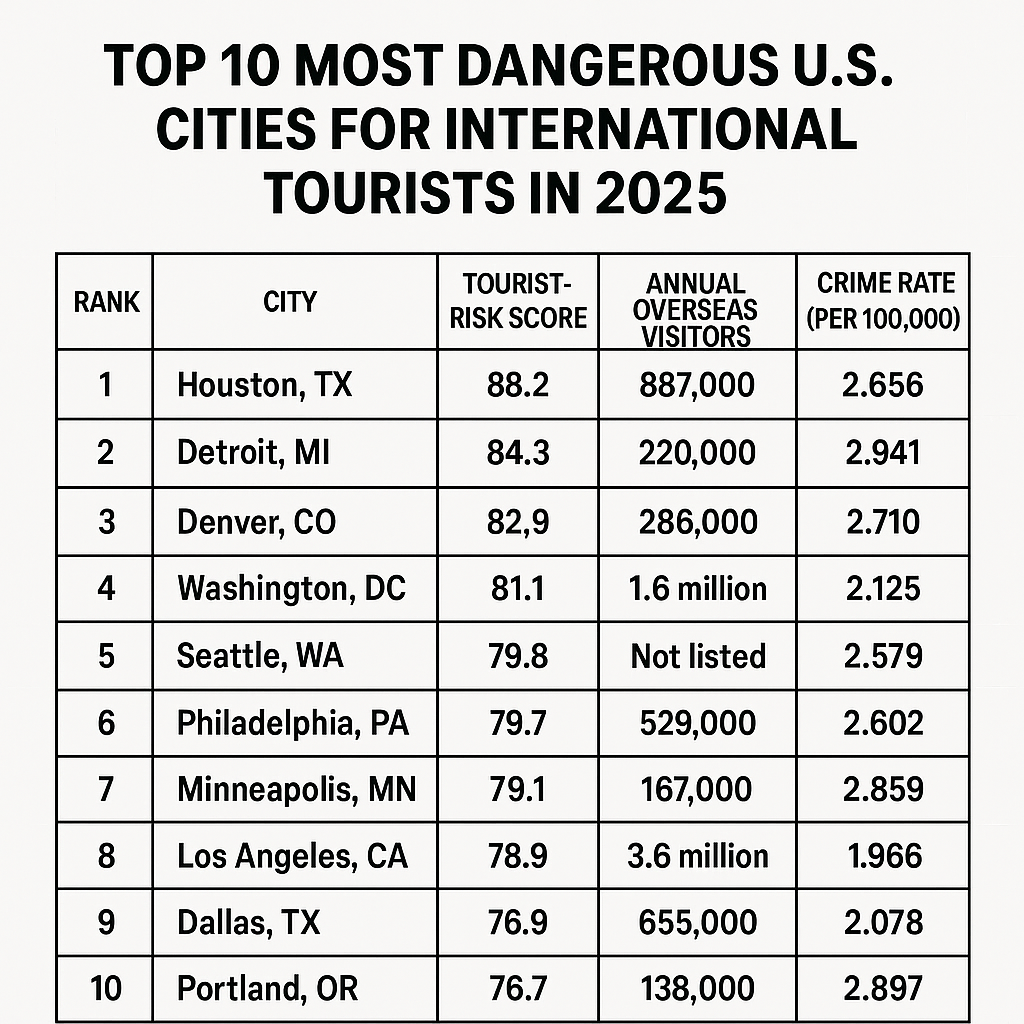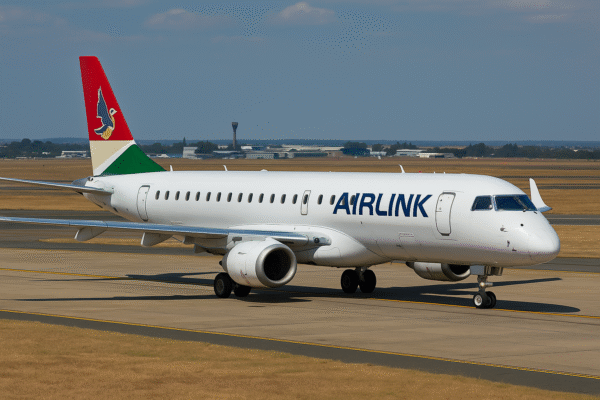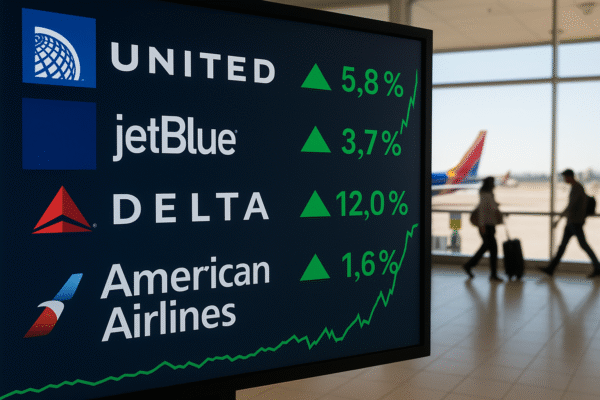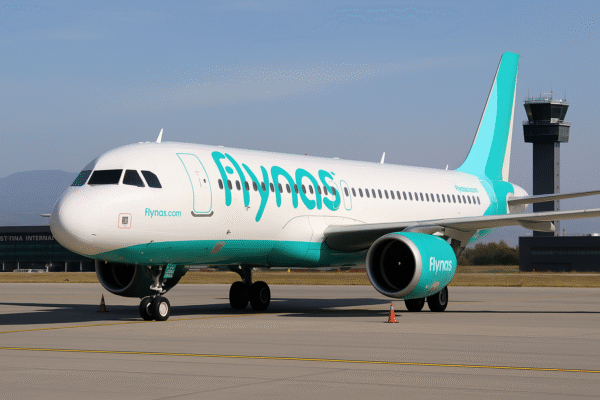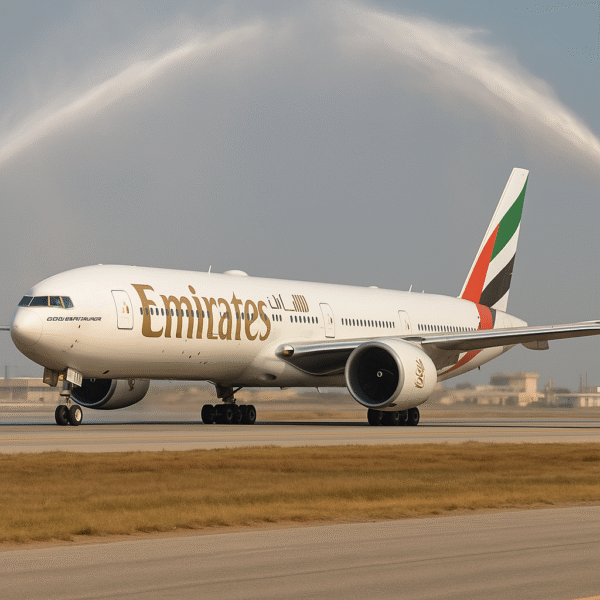The U.S. airline industry is experiencing a significant resurgence in mid-2025 as airline stocks climb sharply, fueled by a renewed surge in travel demand, bullish investor sentiment, and strong financial results from key players like JetBlue, United Airlines, and Delta Air Lines.
As Americans return to the skies in record numbers and international routes see growing traction, stock markets are responding in kind. United Airlines (UAL), JetBlue Airways (JBLU), and Delta Air Lines (DAL) have posted standout gains, drawing fresh attention to the aviation sector as a bellwether for broader economic recovery.
JetBlue Soars on Lean Strategy and Fleet Modernization
JetBlue Airways made headlines this week by leading the sector in stock gains, jumping 3.7% on July 16 alone. Once considered an underdog among major U.S. carriers, JetBlue is now emerging as a model of nimble strategy and efficient operations.
In Q2 2025, the airline aggressively trimmed unprofitable routes and invested in newer, fuel-efficient aircraft. These moves not only helped reduce costs but also positioned JetBlue to attract environmentally conscious travelers. Routes to the Caribbean and transcontinental destinations have seen increased load factors, particularly among leisure and visiting-friends-and-relatives (VFR) travelers.
According to data from the U.S. Department of Transportation, JetBlue has also improved its on-time performance and passenger satisfaction scores—factors that appeal to both travelers and Wall Street.
United Airlines Gains Altitude with Business Travel Revival
United Airlines posted a robust 5.8% stock increase following announcements of a projected six-point rise in Q3 demand. Much of this growth is attributed to a resurgence in corporate and premium cabin bookings, especially on transatlantic and U.S. West Coast routes.
United’s recent capacity optimization—sharpening focus on high-yield hubs like Newark Liberty and Chicago O’Hare—has improved revenue per available seat mile (RASM). The airline has also embraced digital upgrades that enhance passenger convenience and backend efficiency.
CEO Scott Kirby noted that “business travel is coming back stronger than expected,” signaling optimism for long-term recovery in a segment that had lagged behind leisure post-pandemic.
Delta Air Lines Dominates in Premium Travel Segment
Delta Air Lines delivered one of the most impressive earnings reports in Q2, announcing $15.5 billion in revenue and a $1.8 billion pre-tax profit. The airline’s stock surged nearly 12% following the announcement.
Delta’s strategy of enhancing its premium offerings—such as Delta One suites and expanded Sky Clubs—has paid off as passengers increasingly prioritize comfort and exclusivity. The airline has become a market leader in luxury travel, with many leisure travelers opting for business class experiences.
Financial analysts have raised Delta’s Relative Strength (RS) rating to 84, placing it among the top performers in the transportation sector.
Mixed Results for Southwest and American Airlines
Southwest Airlines and American Airlines have shown more muted stock movements. Southwest rose a modest 0.75%, continuing to hold ground in the domestic leisure market but struggling to compete with the rebounding JetBlue.
American Airlines remains flat, trading between $12.04 and $12.55. The carrier is in the midst of fleet modernization and international route expansion, but investor caution persists due to high debt levels and limited premium travel exposure.
Still, both carriers are poised to benefit if the broader upward trend continues into Q4.
Why Airline Stocks Are Rallying Now
The strong mid-July performance across the airline sector is supported by a confluence of macroeconomic and industry-specific factors:
- Stabilizing Consumer Confidence: The U.S. Consumer Confidence Index rose to 106.7 in July, its highest level since 2022, indicating a greater willingness to spend on travel.
- Fuel Prices Holding Steady: With Brent crude averaging $76/barrel in July, airlines have enjoyed relative stability in operational costs.
- Capacity Discipline: Unlike pre-pandemic years, airlines are no longer chasing market share with excess capacity. Instead, they’re focusing on profitability by trimming low-yield routes.
- Boom in Premium Travel: A post-COVID shift toward comfort and exclusivity has elevated demand for business class, even among leisure travelers—a trend exploited by carriers like Delta and United.
What This Means for Travelers
As airlines stabilize financially, travelers are beginning to enjoy smoother operations. Delays and cancellations have decreased, thanks to optimized scheduling and staff recovery across major hubs.
However, the days of ultra-cheap fares may be numbered. As demand climbs and carriers manage capacity more carefully, prices—particularly for long-haul and premium travel—are likely to rise.
On the flip side, premium passengers can expect enhanced experiences, with more perks, upgraded lounges, and loyalty incentives becoming standard across major airlines.
Global Destinations Welcome the Rebound
Tourism-dependent destinations such as Cancun, Rome, Paris, and Tokyo are reporting a marked uptick in U.S. arrivals, supported by increased airlift from Delta, United, and JetBlue.
According to VisitBritain and the Japan National Tourism Organization (JNTO), transatlantic and transpacific bookings from the U.S. are tracking 15–20% higher year-over-year—a clear signal of robust outbound travel demand.
Investor Outlook: Aviation Back in the Spotlight
Wall Street is taking notice. Airline-focused ETFs like JETS have seen net inflows over the past two weeks, and equity analysts are revising upward forecasts for the second half of 2025.
JetBlue is increasingly viewed as a growth stock, Delta as a premium market leader, and United as a strong hybrid operator with a solid international presence. American and Southwest remain solid long-term plays as the market continues to normalize.
Will the Airline Rally Hold?
The sustainability of the current upswing will hinge on key factors:
- Macroeconomic Stability: Low inflation and a steady job market are essential to maintaining demand.
- Geopolitical Conditions: Minimal disruptions in global politics and trade will support continued route expansion.
- Fuel Price Trends: Continued stability or decline in jet fuel prices will underpin profitability.
If these trends persist, the U.S. airline industry may not just recover—but thrive—through the remainder of 2025.
Conclusion: U.S. Airlines Regain Momentum
As of mid-July 2025, the U.S. airline sector has entered a new era of profitability and strategic agility. JetBlue, Delta, and United are leading the way, while American and Southwest work to adapt. For travelers and tourism stakeholders, this recovery signals better connectivity, more reliable service, and a full return to the skies—with confidence.
For more travel news like this, keep reading Global Travel Wire



